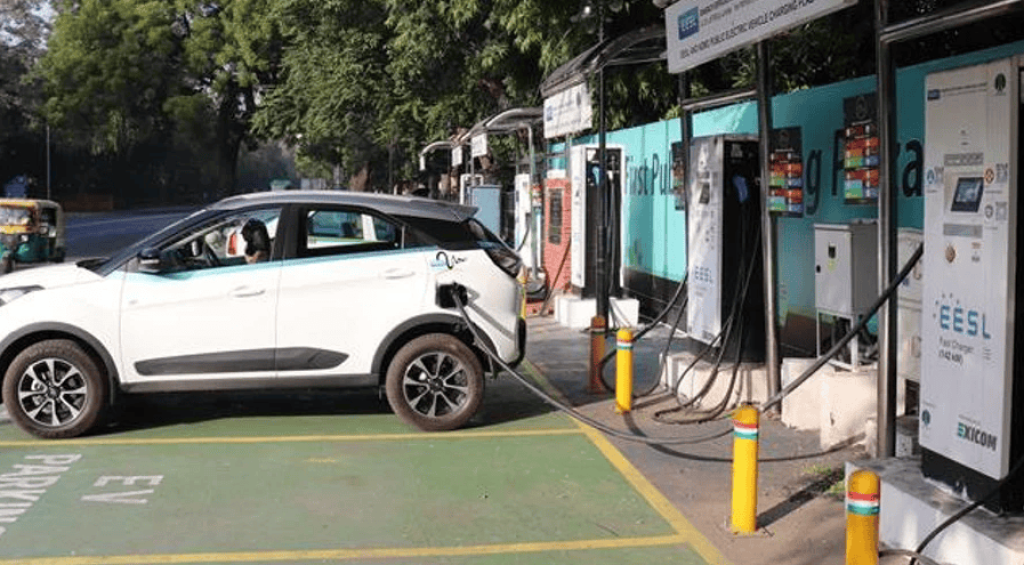As the global shift toward electric mobility gains momentum, countries are making bold bets on electric vehicles (EVs) to meet their climate goals, reduce fuel import dependence, and spur industrial growth. In South Asia too, the EV transition is being positioned as a catalyst for industrial transformation and job creation.
The employment reality, however, is more complex.
While EVs hold the potential to generate high-quality, future-oriented employment, this outcome is not automatic. Without targeted policy interventions, the transition could lead to both job displacement in traditional roles and missed opportunities in emerging segments.
EV manufacturing – fewer parts, fewer job?
Unlike conventional internal combustion engine (ICE) vehicles, EVs have fewer moving parts, simpler drivetrains, and limited need for complex mechanical assemblies. As a result, they require significantly less labor to produce. A typical EV contains about one-tenth the number of components of an ICE vehicle.
In India, recent estimates by iFOREST suggest that around 31 percent of current ICE-related job roles may be affected, with 14 percent becoming obsolete and 17 percent requiring reskilling. The highest impact is expected in ICE manufacturing, particularly in roles such as engine casting, gearbox machining, and exhaust system assembly.
While the short-term coexistence of ICE and EVs may create temporary employment gains, the medium-to-long-term outlook points to a net reduction in direct manufacturing jobs unless alternative opportunities are actively created.
The real opportunity lies beyond manufacturing
This challenge, however, can become an opportunity – if the focus is broadened to the full EV value chain. A complete value chain – from vehicle design, battery manufacturing to deployment, financing, smart infrastructure, and recycling – presents diverse opportunities for employment, entrepreneurship, and innovation.
Figure 1: How EV manufacturing can trigger job creation

Value chain analyses, conducted under the World Bank’s Jobs Accelerator Program, suggest that strategic investments across three key domains can unlock significant employment potential in South Asia:
- Accelerate innovation in EV design, engineering, and testing: Jobs in the EV sector will increasingly cluster around high-value functions such as product design and development, systems integration, and testing – rather than just assembly. To capitalize on this, countries in South Asia should consider strategic investments in shared prototyping and testing infrastructure—particularly for batteries, motors, and full-vehicle systems—to reduce entry barriers for new vehicle manufacturers, spur competition, and speed up innovation cycles. Strengthening engineering capabilities across the EV value chain is also critical, with targeted support for research and development in areas like e-motors, power electronics, and embedded software. Finally, countries in South Asia should aim to localize the development of tooling and molds for EV components, many of which are currently imported, to build greater self-reliance and manufacturing agility.
- Enable EV-linked mobility services: To fully realize the potential of EVs, it is essential to view them not just as products, but as platforms that enable a broader ecosystem of mobility services. As EV adoption grows—particularly in two-wheelers, public transport, and commercial fleets—a new layer of services is emerging around fleet operations, maintenance, and digital fleet management. Governments can support this transition by enabling Fleet-as-a-Service (FaaS) models for both passenger and cargo mobility, which can generate local employment opportunities in fleet operations, driver training, and vehicle maintenance. Strengthening digital infrastructure for vehicle tracking, route optimization, and predictive diagnostics will be key to efficient fleet performance. Additionally, promoting partnerships between local mobility providers and technology platforms can help implement these solutions effectively at the city level.
- Scale smart urban infrastructure: Widespread adoption ofEVs not only requires widespread charging points, but it could benefit from a broader ecosystem of smart urban infrastructure, including traffic flow and parking systems that are increasingly driven by software, data, and Internet of Things (IoT) technologies. This shift opens up new high-skill employment opportunities in urban areas. Key areas of focus include developing sensor-based traffic and parking management systems, establishing digital urban control centers to coordinate mobility services, and building integrated Mobility-as-a-Service (MaaS) platforms that unify different modes of transport. These advancements not only support EV adoption but also help modernize urban mobility systems.
A job-centered EV transition may be possible
To summarize, EVs can create jobs – but only if the scope of what is considered as the “EV sector” is expanded beyond pure manufacturing. The employment gains will come not from assembling vehicles alone, but from building the capabilities, services, and systems that surround them.
That implies:
- Pivoting from low-skill assembly to high-skill engineering, prototyping, and systems integration,
- Backing job-rich mobility services instead of focusing solely on manufacturing, and
- Embedding EV planning into broader digital and urban infrastructure strategies.
Countries in South Asia are well-positioned to lead in this space, but time is of the essence. The choices made today on industrial policy, skilling, and urban infrastructure will determine whether the EV transition becomes a story of inclusive, future-ready job creation.
Source : VOXeu



































































